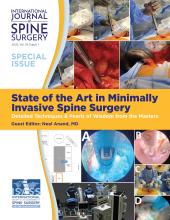ABSTRACT
Background Anatomic variation in the relationship between the lumbar spine and sacrum was first described in the literature nearly a century ago and continues to play an important role in spine deformity, low back pain (LBP), and pelvic trauma. This review will focus on the clinical and surgical implications of abnormal lumbosacral anatomy in the context of sacroiliac joint (SIJ) disease, spine deformity, and pelvic trauma.
Methods A PubMed search using the keywords “lumbosacral transitional vertebrae,” “LSTV,” “transitional lumbosacral vertebrae,” “TLSV,” and “sacral dysmorphism” was performed. The articles presented here were evaluated by the authors.
Clinical Significance The prevalence of LSTV varies widely in the literature from 3.9-% to 35.6% in the spine literature, and sacral dysmorphism is described in upwards of 50% of the population in the trauma literature. The relationship between LSTV and LBP is well established. While there is no agreed-on etiology, the source of pain is multifactorial and may be related to abnormal biomechanics and alignment, disc degeneration, and arthritic changes.
Surgical Implications Understanding abnormal lumbosacral anatomy is crucial for preoperative planning of SIJ fusion, spine deformity, and pelvic trauma surgery. LSTV can alter spinopelvic parameters crucial in planning spine deformity correction. Traditional safe zones for sacroiliac screw placement do not apply in the first sacral segment in sacral dysmorphism and risk iatrogenic nerve injury.
Conclusions LSTV and sacral dysmorphism are common anatomic variants found in the general population. Abnormal lumbosacral anatomy plays a significant role in clinical evaluation of LBP and surgical planning in SIJ fusion, spine deformity, and pelvic trauma. Further studies evaluating the influence of abnormal lumbosacral anatomy on LBP and surgical technique would help guide treatment for these patients.
- lumbosacral transitional vertebrae
- LSTV
- sacral dysmorphism
- transitional lumbosacral vertebrae
- low back pain
- Bertolotti syndrome
- sacroiliac joint fusion
Footnotes
Disclosures and COI: Each author certifies that he or she has no commercial associations (eg, consultancies, stock ownership, equity interest, patent/licensing arrangements, etc.) that might pose a conflict of interest in connection with the submitted work. This paper is exempt from institutional review board review, as it is not human subjects research. There was no external source of funding for this study.
- ©International Society for the Advancement of Spine Surgery







